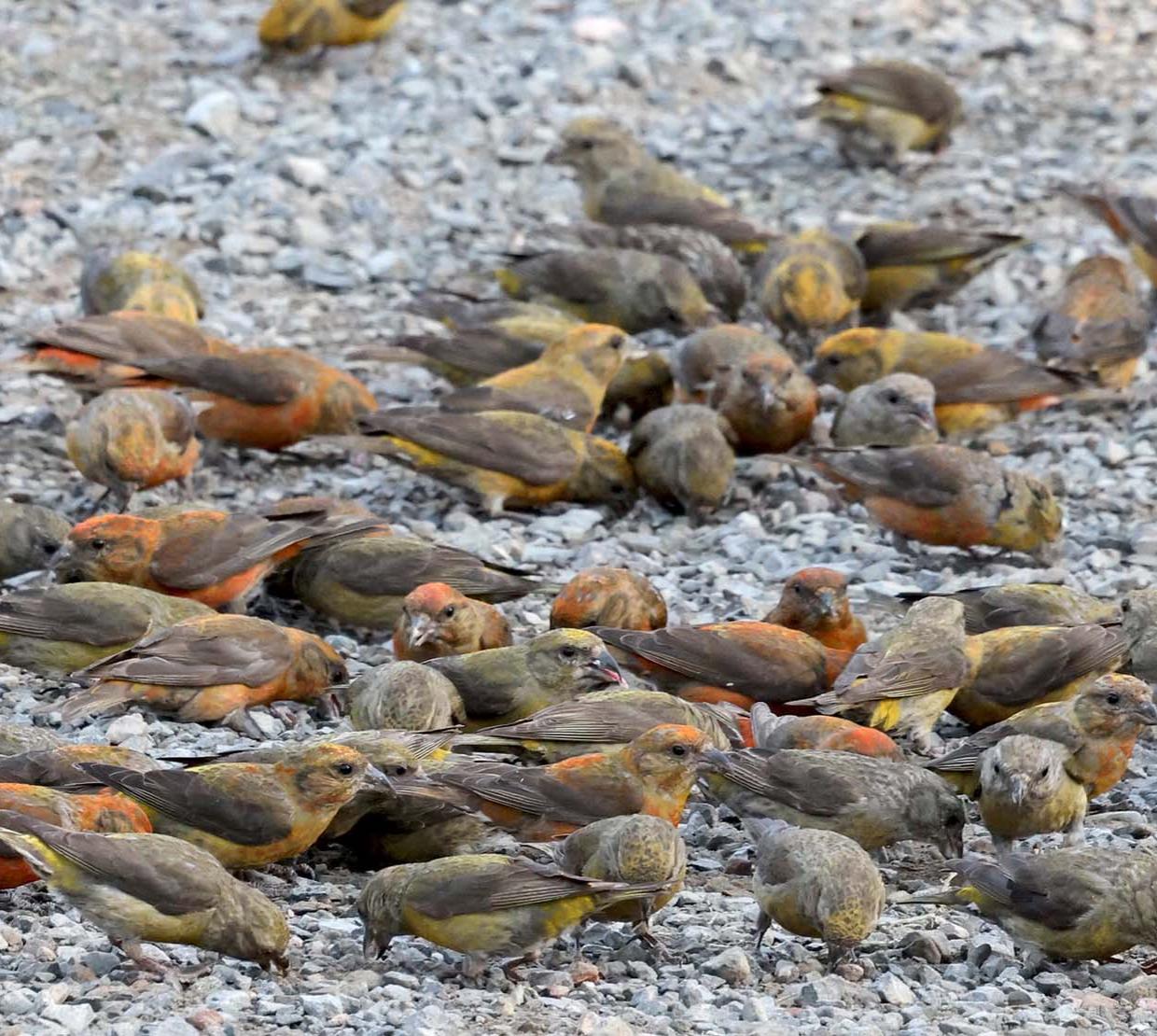Songbirds learning from nearby birds that food supplies might be growing short respond by changing their physiology as well as their behavior, research by Oregon State University's Department of Integrative Biology shows.
After receiving social information from food-restricted neighbors for three days, the red crossbills in the study raised their pace of consumption, increased their gut mass and maintained the size of the muscle responsible for flight when their own eating opportunities were subsequently limited to two short feeding periods per day.
Findings of the study by Jamie Cornelius, published in the journal Proceedings of the Royal Society B, suggest that birds can use social information about food shortages to effect an adaptive advantage for survival.
“This is an entirely new form of physiological plasticity in birds and builds on prior work showing that social cues during stress can actually change how the brain processes stressors,” said Cornelius, an assistant professor of integrative biology.
Cornelius, an ecophysiologist, looks at the mechanisms that wild animals, particularly songbirds, use as they cope with unpredictable and extreme events in their environment, including fluctuations in food availability. Her research combines natural history, endocrinology and biotelemetry to probe for a better understanding of what limits an animal’s fitness under difficult conditions.
“Animals have all kinds of strategies for dealing with challenging environments, ranging from seasonal avoidance strategies like hibernation or migration to behaviors like caching or altered foraging activity,” she said. “Physiological adjustments in metabolic rate, digestive capacity and energy reserves can sometimes accompany behavioral changes, but those things can take time to execute. That means unpredictable environmental conditions are particularly challenging for many animals.”
Read the full story here.




